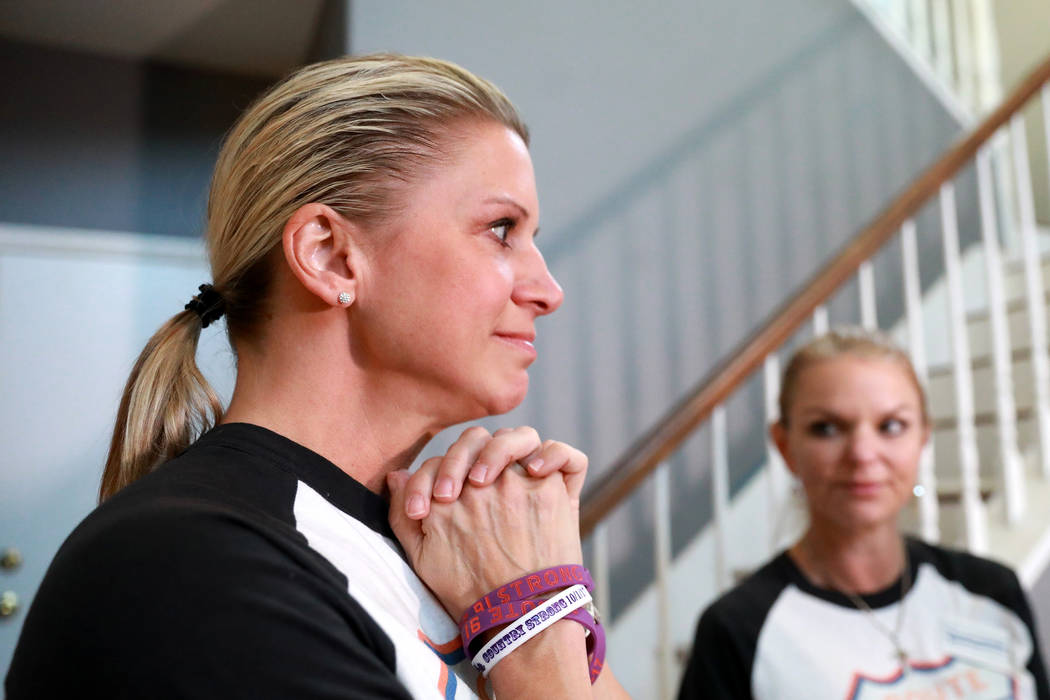MGM video provokes range of emotions for Route 91 survivors
Stacie Armentrout felt nauseated watching surveillance video of Stephen Paddock roaming Mandalay Bay in the days before the Oct. 1 shooting on the Strip.
Armentrout, who dislocated her knee while fleeing the Route 91 Harvest festival concert with her husband and two teenage daughters, described in a shaky voice Thursday how watching the video simultaneously made her feel ill and let down.
“We want to know why. We want to know how,” said Armentrout, referring to the questions surrounding Paddock’s motive for carrying out the deadliest mass shooting in modern U.S. history.
Disappointment that the video provided no insight into Paddock’s motive was just one emotion expressed among survivors of the concert shooting.
Armentrout and fellow survivor Lisa Fine, a founder of the nonprofit Route91Strong, said they also felt angry when they saw Paddock’s normal-looking demeanor as he dealt with hotel employees.
“He was just like an everyday person,” Fine said.
But Shawna Bartlett, who injured her leg during the concert shooting, was glad to see Paddock moving, eating and gambling alone in the footage. She said she hopes that will put conspiracy theories of multiple shooters to rest.
“It answers the ‘how,’” Bartlett said. “Now you watch the videos knowing he wasn’t with anybody, ever.”
Such reactions are part of a normal range of responses to a potential trigger for survivors struggling with post-traumatic stress in the aftermath of the shooting, said Michelle Paul, a clinical psychologist and director of UNLV’s mental health clinic, The Practice.
“Individual people are obviously individual people,” she said. “A given situation is going to elicit different feelings based on that individual person’s thoughts on the situation.”
Paul said for those still suffering traumatic responses to the shooting, stepping away from news coverage of the event would probably be wise.
“If anybody is continuously exposed to stress, the healing for the long term is going to be compromised,” she said.
Christine Caria, who suffered trampling wounds during the attack and experienced traumatic episodes in the first months after the shooting, follows that advice. By completely avoiding news reports, she said she has been able to regain control of her emotions and conquer other triggers, like the sound of gunshots.
“I don’t want to see it,” she said of the surveillance video. “If it helps anybody else, that’s fine. But for me personally, it’s not going to bring anyone back.”
Still, she’s glad the video was released. Just to know the surveillance footage exists fills a void, Caria said.
Apart from getting angry, Fine said watching the video made her realize tragedy can strike anywhere at anytime and that not all evil people give off obvious signs. She said it motivated her even more to help other shooting survivors cope with their traumas.
“A lot of people, what I notice is that they’re broken,” Fine said. “And that alone is a call for people to help and to support and to give hope. We can’t let them fall.”
Contact Jessie Bekker at jbekker@reviewjournal.com or 702-380-4563. Follow @jessiebekks on Twitter.
























